
Have you ever wondered why ear piercing is such a timeless tradition in Hinduism? Not just for girls, but for boys too?
It’s not just about ornaments or beauty. In Sanatan Dharma, this practice is part of a powerful Vedic ritual known as Karnavedha, one of the sixteen sacred Samskaras that mark key milestones in a person’s spiritual evolution.
From the recitation of mantras to precise timing, this isn’t a random cultural act. It’s a conscious alignment of body, mind, and energy. Ancient scriptures highlight ear piercing as a means to refine intellect, protect spiritual energy, and prepare the child for receiving sacred knowledge, especially through sound.
Ayurveda, too, recognizes the ears as a crucial point for energy balance, brain health, and emotional stability.
So why does a small hole in the ear carry such deep importance? And how has this simple act remained unchanged through thousands of years?
In this article, you’ll uncover the spiritual symbolism, Ayurvedic logic, and cultural significance of ear piercing in Hinduism, and why it’s still a celebrated rite of passage in many traditional households.
What is Karnavedha and When is It Done?
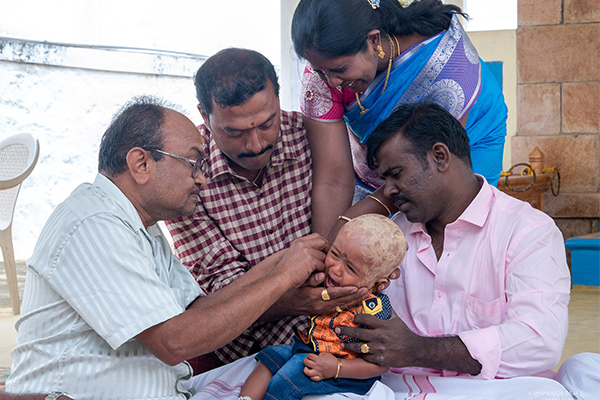
Karna vedha is a sacred rite of passage that marks the spiritual and physical growth of a child.
The word Karnavedha comes from two Sanskrit roots:
- “Karna” meaning ear
- “Vedha” meaning to pierce or perforate
It is listed among the Shodasha Samskaras, the sixteen sacraments outlined in Dharmashastra texts like the Manusmriti and Grihya Sutras that guide a Hindu through life from birth to death.
When is Karnavedha Performed?
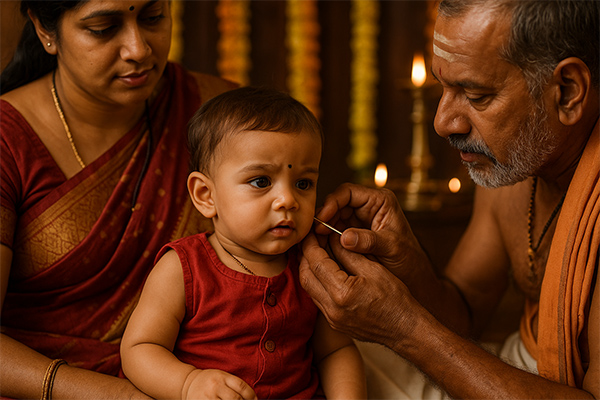
Traditionally, Karnavedha is performed during infancy or early childhood, ideally:
- In the 6th or 7th month
- Or in an odd year of life (3rd, 5th, or 7th year)
The ritual is performed on both boys and girls, though in modern times it’s more commonly retained for girls. According to tradition:
- The right ear is pierced first for boys
- The left ear is pierced first for girls
This is not arbitrary, it corresponds with energy channel orientation in Ayurvedic and yogic traditions, balancing the ida and pingala nadis.
The Ritual Procedure
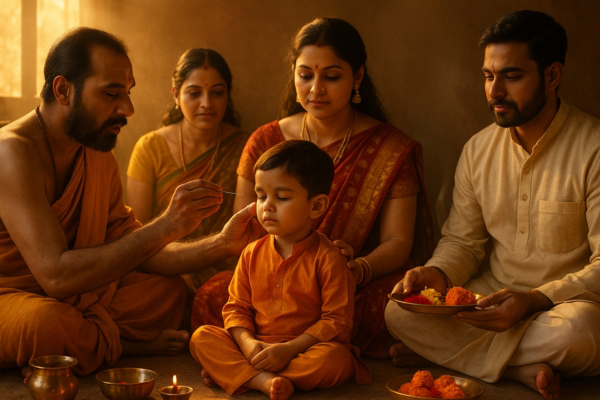
- A family priest (or a goldsmith in earlier times) performs the ritual
- Auspicious mantras are recited
- Offerings and blessings are made to deities, especially Surya (Sun God)
- A gold or silver needle is used to pierce the ears
- The child is usually made to sit facing the east or the rising sun, invoking positive pranic flow.
Karnavedha is not merely symbolic, it’s intended to awaken receptivity to sacred sounds, especially Vedic mantras, and to prepare the child for a life aligned with dharma.
Spiritual and Scriptural Significance
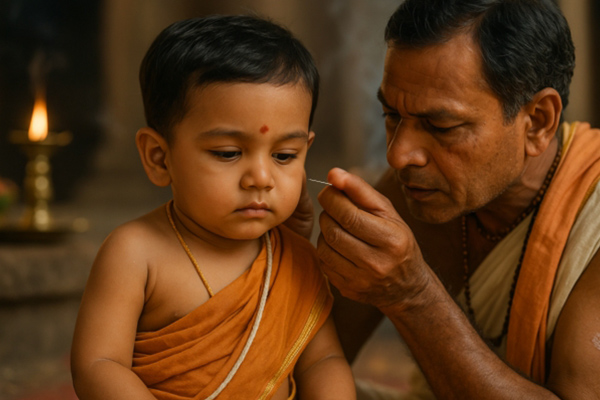
Recognized as one of the Shodasha Samskaras (sixteen sacraments), Karnavedha (ear piercing) marks a significant milestone in an individual's spiritual journey.
Opening the Inner Ear to Sacred Sounds
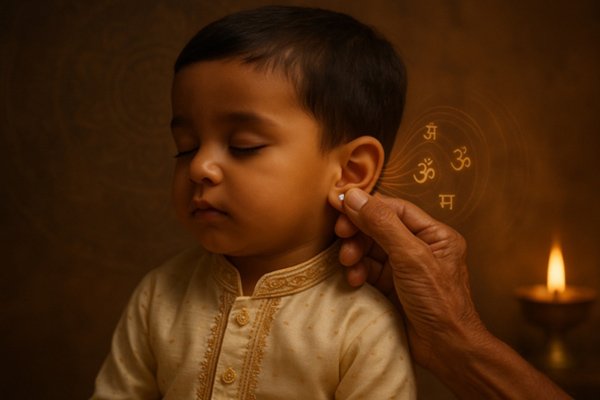
The act of piercing the ears is believed to open the 'inner ears', enhancing one's ability to receive and internalize sacred sounds. This aligns with the Vedic emphasis on Śravaṇa (listening) as a primary means of acquiring spiritual knowledge. By facilitating better reception of mantras and divine sounds, Karnavedha aids in purifying the mind and nurturing the spirit.
Scriptural References
While specific verses detailing Karnavedha are not directly cited in the major Vedic texts, its significance is acknowledged in various Dharmashastra and Grihya Sutra texts, which outline the importance of samskaras in an individual's life. These texts emphasize the role of such rituals in shaping one's dharma and spiritual progression.
Symbolism in Practice
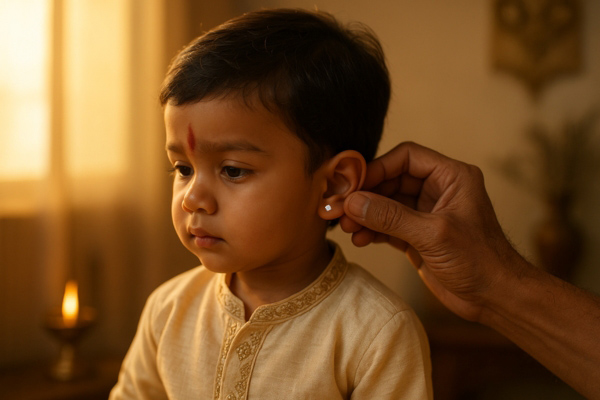
Traditionally, the right ear is pierced first for boys, symbolizing the path of masculinity, while the left ear is pierced first for girls, representing femininity. This practice reflects the belief in balancing the body's energies and aligning with one's inherent nature.
Furthermore, the procedure is often performed during auspicious times, with the child seated facing the east, invoking the blessings of the rising sun and aligning with cosmic energies.
Scientific and Ayurvedic Reasons for Ear Piercing
While ear piercing holds deep spiritual significance in Hinduism, it also offers various health benefits recognized by both Ayurveda and modern science.
Ayurvedic Perspectives
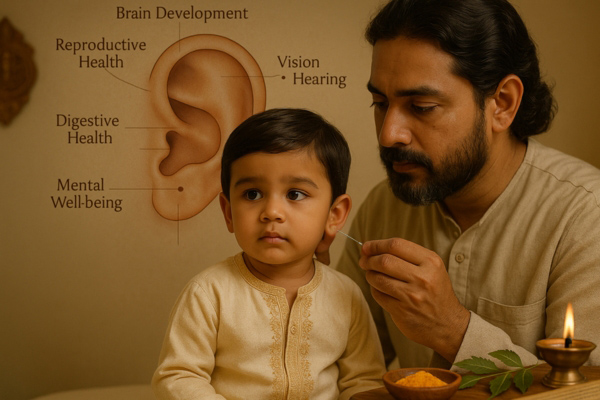
- In Ayurveda, the practice of ear piercing, or Karnavedha, is believed to stimulate specific points in the ear that correspond to various bodily functions:
- Brain Development: The earlobes contain meridian points that connect the right and left hemispheres of the brain. Piercing these points is thought to activate brain function and promote intellectual growth.
- Reproductive Health: Piercing the central point of the ear lobe is associated with maintaining a healthy menstrual cycle in females and enhancing sperm production in males.
- Vision and Hearing: The centre of the ear lobe is linked to vision and hearing. Stimulating this point through piercing may help improve eyesight and auditory functions.
- Digestive Health: Ear piercing is believed to influence the digestive system positively, aiding in better digestion and metabolism.
- Mental Well-being: Stimulating the ear lobe can help prevent conditions like anxiety, nervousness, and obsessive-compulsive disorders by promoting mental balance.
Scientific Insights

Modern science supports several of these traditional beliefs:
- Acupressure Points: The earlobe is rich in acupressure points that, when stimulated, can influence various organs and systems in the body.
- Vagus Nerve Stimulation: The area of the ear lobe is innervated by the auricular branch of the vagus nerve, which plays a role in autonomic nervous system regulation. Stimulating this nerve can help manage conditions like epilepsy and depression.
- Immune Response: Piercing the ear lobe may initiate an immune response that strengthens the body's defence mechanisms against infections.
- Energy Flow: Wearing earrings is thought to maintain the flow of energy in the body, contributing to overall vitality and well-being.
- These insights highlight the multifaceted benefits of ear piercing, bridging ancient wisdom with contemporary understanding.
Cultural Importance Across India
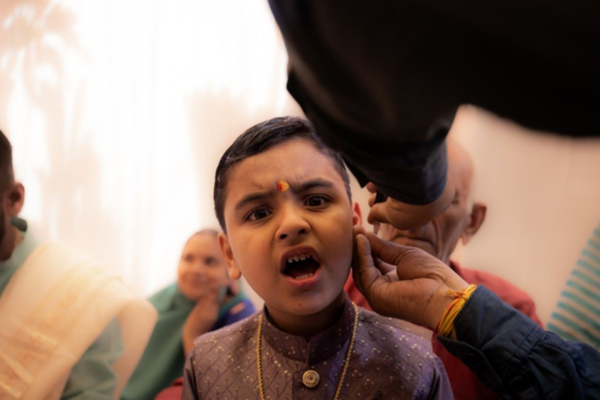
Ear piercing, or Karnavedha, is a practice deeply embedded in the diverse cultural tapestry of India. While the ritual's core significance remains consistent, its expressions and customs vary across regions, reflecting the rich cultural diversity of the country.
A Pan-Indian Tradition
In many Hindu communities, Karnavedha is performed for both boys and girls, symbolizing their readiness to receive sacred knowledge and participate in spiritual practices. This rite of passage is often accompanied by ceremonies that include prayers, offerings, and celebrations with family and community members.
Regional Variations
- South India: In states like Tamil Nadu and Kerala, ear piercing ceremonies are grand events, often combined with other rituals such as the first haircut (Mundan). These ceremonies are marked by elaborate decorations, traditional music, and communal feasts.
- North India: In regions like Uttar Pradesh and Bihar, the ceremony is typically conducted during specific auspicious months, with rituals performed by family priests. The emphasis is on aligning the ceremony with favorable astrological timings.
- Western India: In Maharashtra and Gujarat, ear piercing is often associated with festivals and is considered an essential part of a child's upbringing. The ceremony may be linked to local deities and involve community participation.
- Eastern India: In Bengal and Odisha, the ritual may be performed during specific festivals or as part of broader life-cycle ceremonies. The practices here may incorporate unique local customs and traditional attire.
Contemporary Practices

In modern times, while some families continue to uphold traditional ceremonies, others opt for simpler procedures, sometimes conducted in medical settings. Despite changes in execution, the underlying cultural and spiritual significance of Karnavedha persists.
Across India, ear piercing remains a meaningful ritual that connects individuals to their heritage, signifies important life transitions, and embodies the enduring values of Hindu culture.


-in-Astrology.jpg)
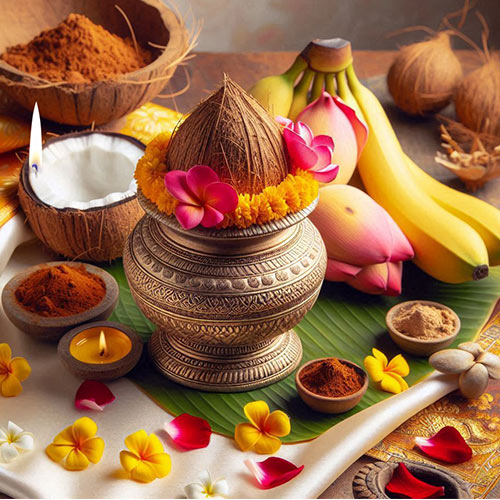
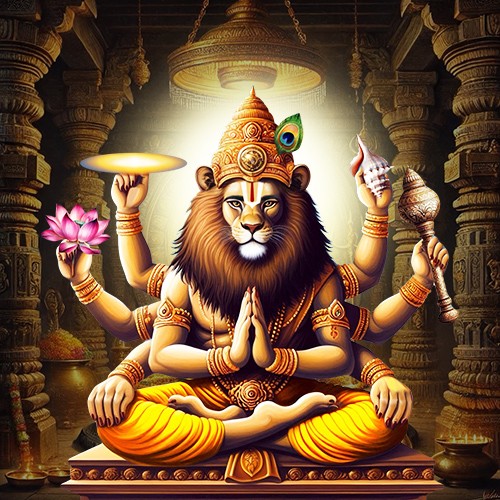



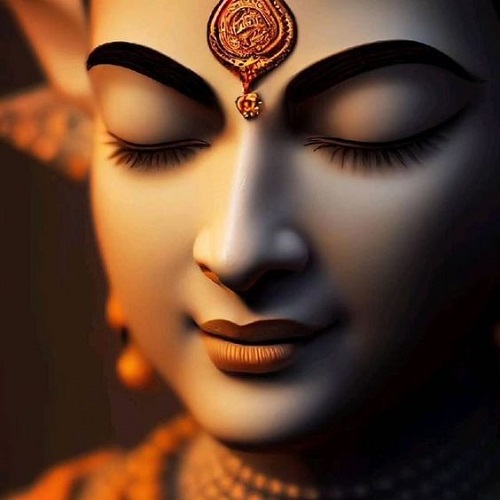
.jpg)

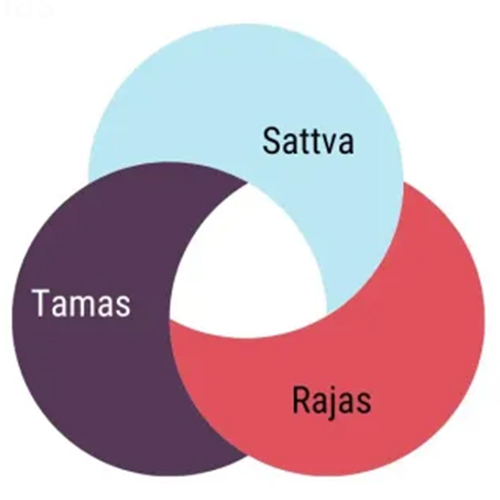
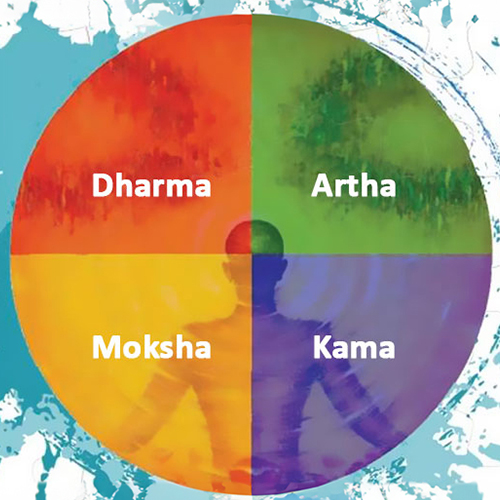
Comments 0
Leave your thought here